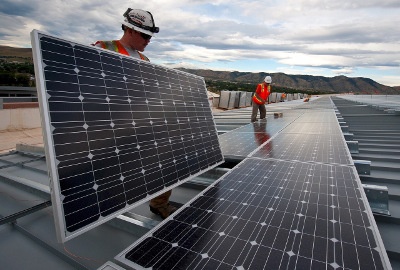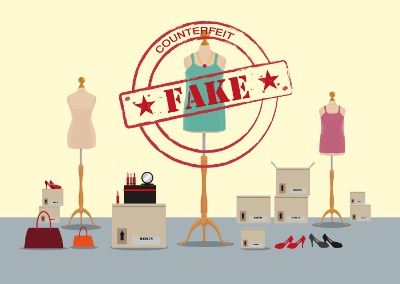Best in Manufacturing – January 1, 2017
From all of us at InTouch, we’d like to wish you a Happy New Year!
Each Sunday, we publish a list of top articles and other content related to manufacturing in areas like quality control, product development, supply chain management, sourcing, auditing and law.
1. China’s awful manufacturing safety record
The phrase 差不多, or chàbùduō, means “close enough” in Chinese. While it’s sometimes used as a response to product quality issues (see #3), it’s also unfortunately an excuse for poor safety practices in factories and work sites.
 But how bad, exactly, is this problem in China?
But how bad, exactly, is this problem in China?
The author reports,
…the death toll from work accidents amounted to 66,182 people in 2015. That’s over 10 times the number in the US and the UK combined.
Preventing these fatalities isn’t always possible because some factories don’t place enough emphasis on proper safety. And even when third-party audits are employed to verify if factories have a dangerous work environment, often times their management will make sure they only appear compliant.
The Chinese government certainly cares about dangerous working conditions. When there are other pressing matters at hand that affect more people, however, like the "airpocalypse", concerns about safety fall to the backburner. Typically, it’s only after high-profile incidents occur, like the Tianjin explosions, that significant attention and change comes to worker well-being.
Avoiding social compliance issues related to work safety starts with a thorough audit that sees past any tricks factory management might use. And the best approach isn’t to wait until an accident happens. What’s best is making sure they never happen at all.
To read more about the dangers in Chinese industry, check out the full article in the link below:
The Horrendous Safety Record of China’s Manufacturing Sector – Renaud Anjoran, Qualityinspection.org
2. A new flexible packaging system
In the manufacturing world, speed and flexibility are essential, especially within the realm of packaging. If customers need to respond quickly to a new market trend, then factories can’t afford to waste time. Last season’s packaging won’t do for this season’s wildly different demands. And making customers wait for what they need to remain competitive can only hurt the factory’s reputation and business prospects.
The author mentions, however, a new modular packaging solution that utilizes a linear motor track system. Specifically, he says that,
The movement of the product carriers within the system can be rapidly adapted to deal with different formats, sizes and types of product – even down to batch sizes of one – or the particular requirements of seasonal demands.
The multi carrier system is flexible in another regard as well. Due to its modular nature, manufacturers can introduce whatever amount of the system as they see fit. This benefit will afford companies that want to upgrade their processes gradually the ability to implement this new technology at their own pace. And thankfully, that flexibility means manufacturers can choose which aspects of the multi carrier system they want to adopt.
If you’d like to learn more about this new system, check out the full article in the link below:
Multi Carrier System: Driving Flexibility – Editorial staff, the Manufacturer
3. Has solar energy finally become cheaper than fossil fuels?
One of the chief barriers to installing solar panels has always been cost. Investment in solar energy has been limited by comparatively cheaper sources of energy, such as coal, oil and natural gas. But 2016 may have shown us the day that  solar finally becomes cheaper than fossil fuels. According to a December report from the World Economic Forum (WEF), solar and wind power are now the same price or less expensive than fossil fuels in more than 30 countries.
solar finally becomes cheaper than fossil fuels. According to a December report from the World Economic Forum (WEF), solar and wind power are now the same price or less expensive than fossil fuels in more than 30 countries.
It all boils down to a factor called “grid parity”, says Michael J. Coren, author of a related article published in Quartz. He writes, “As prices for solar and wind power continue their precipitous fall, two-thirds of all nations will reach the point known as ‘grid parity’ within a few years, even without subsidies”.
Countries are said to have reached grid parity when alternative sources of energy, namely wind and solar, cost less or equal to purchasing power from an electrical grid.
What might this mean for manufacturers and global warming?
Energy usage and spending is a major concern for manufacturers. And disruptions in electricity have long been a source of production delays for importers. Countries like China and Venezuela have rationed electricity at various times in recent years. Cheaper energy in the form of renewables can certainly lower costs for manufacturers. But renewable energy can be inconsistent, leading to black outs.
Another concern is global warming, which so far has not been addressed with adequate investment in renewable energy, according to the United Nations. Investment still lags far behind estimates needed to avoid “catastrophic” consequences.
Still, experts continue to anticipate a bright future for solar energy production, with prices expected to fall to half those of coal or natural gas between now and the next 10-20 years. To learn more about this recent milestone in solar energy, check out the full article below:
2016 was the year solar panels finally became cheaper than fossil fuels. Just wait for 2017 – Michael J. Coren, qz.com
4. From China to all of us: lessons about globalization
China has made tremendous leaps over the past few decades. It went from a country with a national income of $155 per capita in the 1970s to one of the world’s largest, most formidable economies. Manufacturing has been a primary driver of this success – without it, who knows where China would be right now.
But underlying the introduction of large-scale manufacturing to China is an even more important change in mindset: moving past isolationism. The author makes the point that during the era of Mao Zedong, the mantra was self-sufficiency. Trading with other countries in the time of Mao, especially Western ones, was seen as “capitalist and imperialist”.
Thinking like this hampered the country’s growth and discouraged foreign companies from investing. With the boot of ideology on the economy’s throat, the country couldn’t develop. After Mao’s passing, however, China opened up. China began to reap the benefits of trade, investment and specialization.
Fast forward to today and it’s easy to see the effects of globalization on China. As the author notes:
China’s embrace of global merchandise trade and capital markets has transformed it into a middle-income country with a GDP of almost $8,000 per capita in current U.S. dollars, and the largest producer of manufactured goods in the world.
Considering where China came from decades ago, the development of its economy is nothing short of extraordinary.
Lessons for the world
One clear lesson is the impact of isolationism. While the ability to make everything on your own sounds good, reality just doesn’t work that way – we’re not all efficient at making certain products. Nations specialize in varying types of production and learn to make all sorts of goods better than other countries. With this specialization comes efficiency and surpluses of goods that countries can exchange for other goods or services that they are not as skilled at making or providing.
There are clear benefits of trade. And while embracing globalization and trade doesn’t always mean everyone will get to keep their job, eventually the market changes, new opportunities emerge and countries find different ways to be competitive.
China has demonstrated this transformation by moving from a manufacturer of basic items, like toys, clothes and shoes, to a drone maker and cellphone exporter (among many other advanced items).
Curious about the other lessons China can teach us? Read more about China’s rise to a mega-economy and what it can teach everyone by checking out the full article in the link below:
What China’s “Export Machine” Can Teach Us about Globalization – Penelope Prime, Quality Digest
5. Curtailing Chinese counterfeits
China has a few notorious markets for counterfeits. Walking up and down the aisles, you can find anything from “Guxxi” bags to “Louis Wuiton” wallets. The owners of Gucci and Louis Vuiton probably wouldn’t be too happy seeing vendors selling fake versions of their high-end merchandise to a few individual customers. But they’d likely be even more dismayed  to discover large shipments of these illegitimate copies leaving China in great numbers.
to discover large shipments of these illegitimate copies leaving China in great numbers.
To some companies, the logical step to prevent this proliferation is to register their trademarks and hope that fake products never reach other markets. Yet the author makes the point that this is not enough:
…not only must you file for a China trademark for your brands and your logos, but you should also then register your granted China trademark with China customs to stem counterfeits of your products from leaving China.
Chinese customs will help you so long as you take appropriate measures. You can’t expect them to enforce your trademark rights if you haven’t jumped through all the necessary hoops.
The author also mentions that it takes about nineteen months to register with both the trademark office and customs. And although that amount of time may seem extremely long, once you’ve got the law on your side, you’ll be able to put a dent in the number of fake goods leaving China.
To learn more about preventing fake Chinese goods from leaving the country and tarnishing your brand, check out the full article in the link below:
An Innovative Approach to Stopping China Counterfeits!?? – Dan Harris, China Law Blog
We’re constantly scanning the web for top manufacturing stories and news. If you’d like to submit an article for consideration for our weekly Best in Manufacturing, send us a message and let us know.







